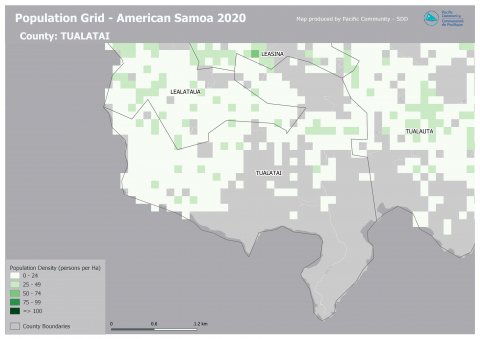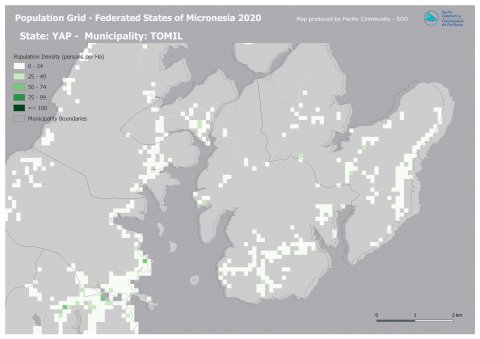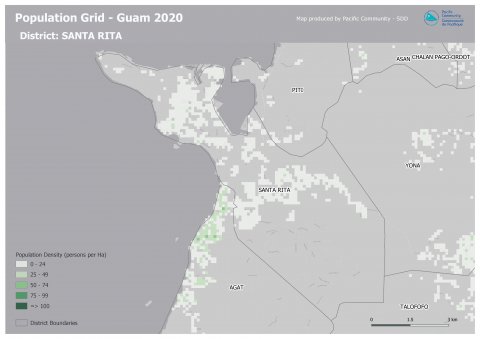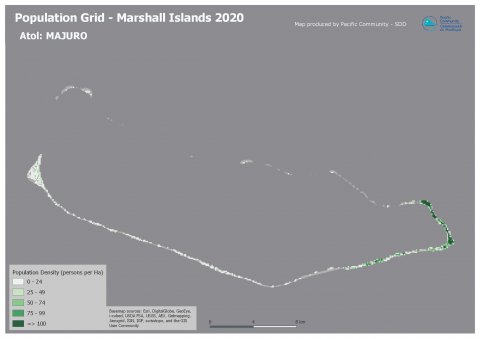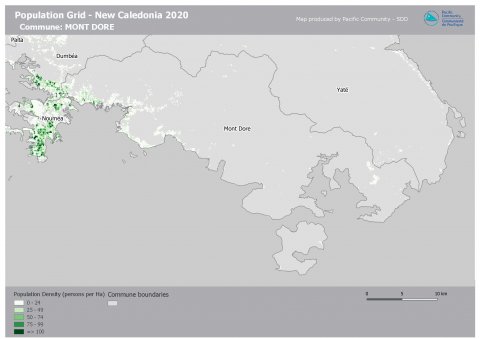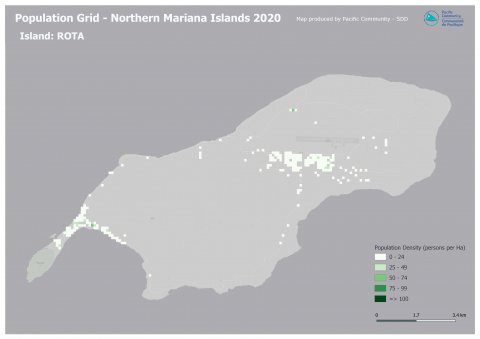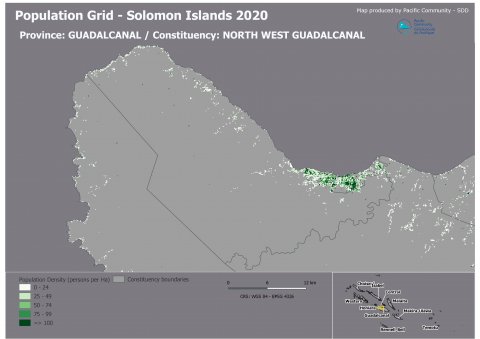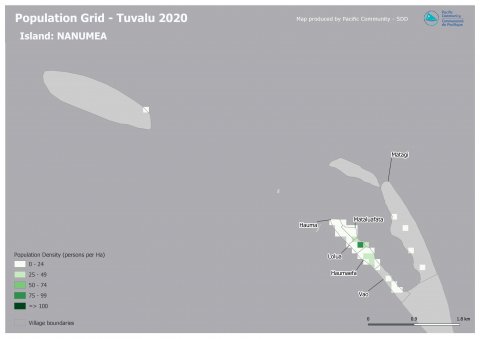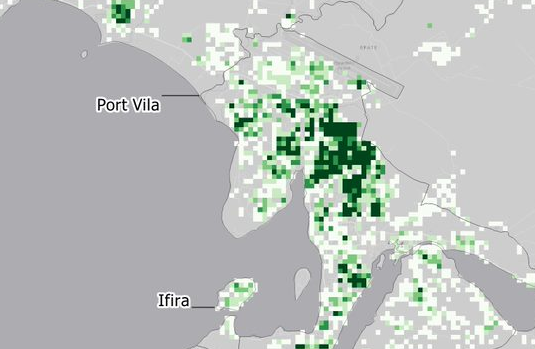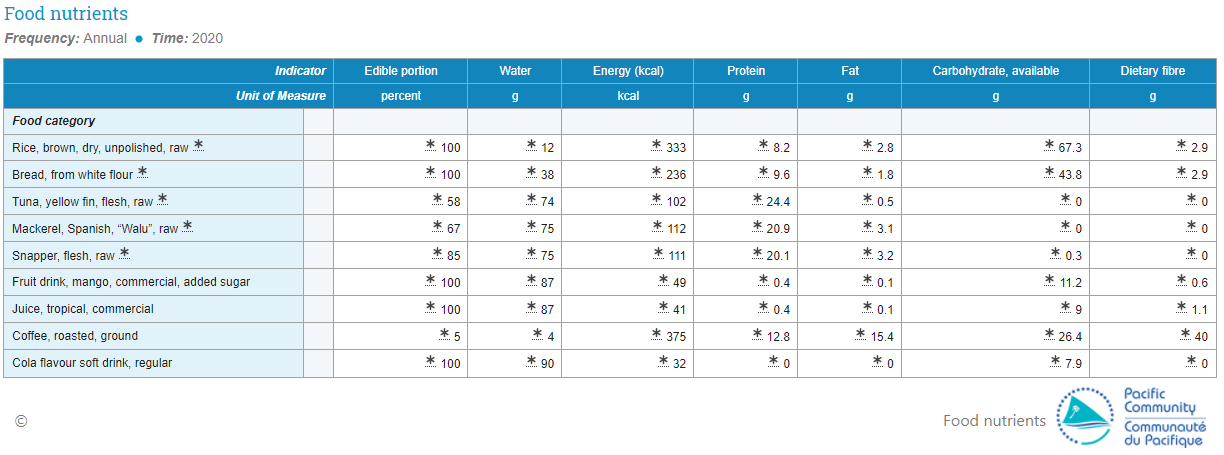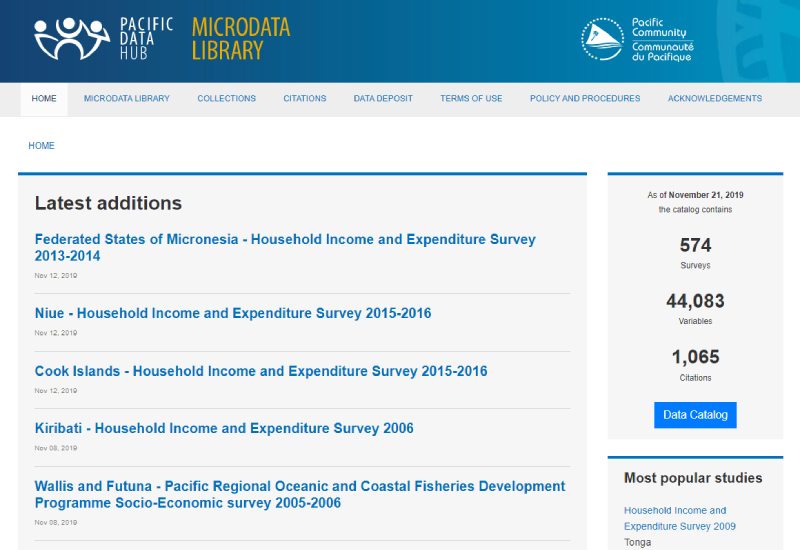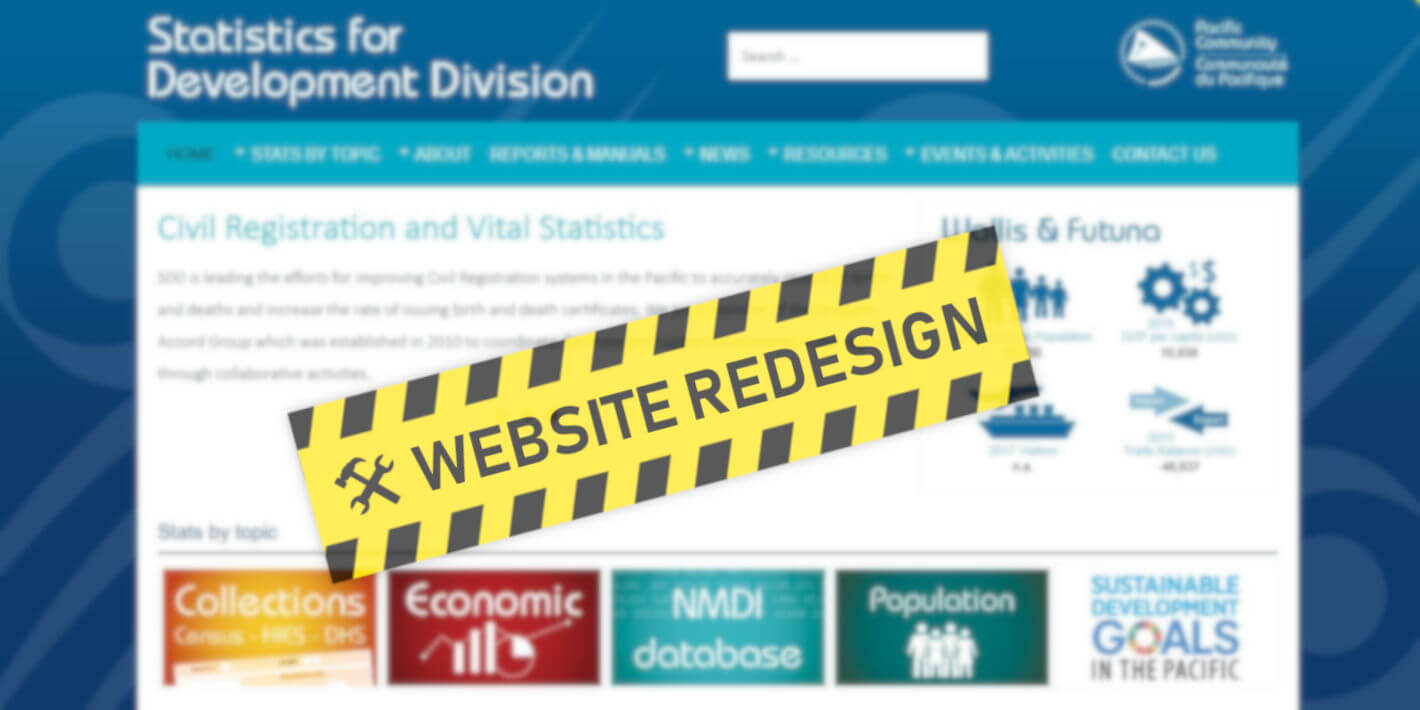On Going
IDA Project Grant Number: D544 [P169122]
Project summary
The Statistical Innovation and Capacity Building in the Pacific Islands (PACSTAT) project has an overall development objective to improve the quality of welfare data collection and accessibility to comparable welfare data in the Pacific Island Countries (PICs). To achieve this objective, the project includes the following three components:
- to support the administration of the Pacific Statistics Methods Board and the dissemination of its recommendations;
- to strengthen SPC’s Statistics for Development Division’s (SDD) ability to play a “statistical system leader” role and provide technical assistance on data collection methods; and
- to promote context-appropriate innovation in the region.
Component 1: Pacific Statistics Methods Board
Supporting the running of the PSMB will significantly accelerate the identification and adoption of improved methods by National Statistics Offices (NSOs) in the PICs. The PSMB is seen to be a vital component in the new regional statistics governance framework recommended by the 2017 HOPS meeting. The PSMB is tasked with undertaking literature reviews and field experiments to test the viability of new statistical methods in the Pacific context, as well as making recommendations to NSOs based on the results. This approach has benefits to the region on several levels:
- It introduces a culture of academic rigor in the process of statistical innovations while remaining mindful of the local context and the need for local credibility:
- It promotes harmonisation in the Pacific region by replacing bilateral recommendations from development partners with a more streamlined process; and
- It shifts the burden of investment in experimentation from resource-constrained NSOs to a regional body with higher capacity, which also introduces economies of scale.
Component 2: Institutional Strengthening and Implementation Support
The second component of activities will support SPC-SDD in its transition to a regional knowledge producer and a leader in the dissemination of data. To fulfil its mission of strengthening access to and use of development statistics in policy development, SPC-SDD would benefit from expanded analytical capacity, provided through the recruitment of the three long-term consultants. In addition, this component includes funding for existing SPC staff to support the technical and administrative implementation of the project as well as funding to strengthen SPC-SDD’s ability to provide remote training to NSOs.
Component 3: Alternative data collection methods
The project will support experiments in alternative data collection methods. There are several innovations in data collection that could potentially reduce the costs and complexity of collecting socioeconomic data in PICs, particularly by addressing the vast geography and sparse population constraints to traditional data collection. SPC-SDD will work with NSOs in IDA-eligible beneficiary countries to trial alternative data collection methods, based on what is deemed appropriate and most impactful for the specific contexts.
Project documentation
Project web page and documentation can be found here.
- PACSTAT Project Operations Manual (Updated Aug 2023)
- PACSTAT Financial Management Manual
- PACSTAT Procurement Manual
- PACSTAT Partnership Agreement
- PACSTAT Grant Agreement
- PACSTAT Stakeholder Engagement Plan
- PACSTAT Labour Management Procedures
- PACSTAT 2021 Annual Work Plan and Budget
- PACSTAT 2022 Annual Work Plan and Budget
Procurement
Requests for proposals
Requests for proposals for Research and Innovative Experiments.
RFP and submission form April 2022
Research
Research materials and results of project-commissioned research.
SPC’s Climate Change and Natural Disasters Survey: Core Module

Experimentation
Research materials and results of project-implemented innovative experiments.
(DOCUMENTS WILL BE ADDED DURING PROJECT IMPLEMENTATION)
Learning and knowledge, and Pacific Statistics Methods Board (PSMB) recommendation
Statistics, poverty and harmonisation related learning and knowledge products, and PSMB recommendation
(DOCUMENTS WILL BE ADDED DURING PROJECT IMPLEMENTATION)
Contact, complaints and comments
For further information, please contact Michael Sharp, Economic Statistics and Microdata Specialist ([email protected])
Please refer to SPC’s procurement page to access information for lodging of complaints and comments in relation to project procurement activities.
SDD is producing population grids for all Pacific Island Countries and Territories (PICTs) as an alternative to population statistics represented by administrative areas. Population grids represent data using square "cells". SDD is producing them at 100m x 100m (1 hectare).
Population grids are powerful tools for studying interrelationships between human activities and the environement. They are particularly useful for analysing phenomena, and their causes, which are independant of administrative boundaries such as flooding, disease outbreaks (I.e COVID relief/planning) etc
The population grids being generated for Pacific Island Countries and Territories by SDD are modelled using most recent census data projected where possible to the current year.
The images below show a sample city for each country.
Click on the population grid image to access country's full dataset via the Pacific Data Hub.
The Pacific islands have, so far, escaped the worse impacts of the COVID-19 virus on the health of the people in the region, however the restrictions on international travel and both global and domestic lockdowns have caused severe economic disruption through loss of tourism, reduced remittances and trade flows, higher unemployment and increasing hardship and poverty.
There is currently a lack of reliable and timely data on the depth and breadth of the socio-economic impacts of COVID-19 and its consequences. This Concept Note proposes a programme of High Frequency Phone Monitoring (HFPM) surveys of households in all Pacific Island Countries and Territories (PICTs) across the region. Such surveys would aim to gather data to provide near real-time information to assist governments and development partners to frame and evaluate suitable policy responses and mitigation measures.
The proposed HFPM surveys would involve 15-minute mobile phone call interviews to carefully selected random-sample households in each PICT using Computer Assisted Telephone Interview (CATI) methodology. The surveys would involve a total of six interviews with each selected sample household over a two-phase, twelve-month period. The sample size would be determined by total population according to the following criteria: PICTs with populations >= 100,000 sample size 2,000 HH; a sample of 1,000 HHs for PICTs with a population of <100,000 and a sample of 250 HH each for Niue and Tokelau. Wherever possible, samples would be drawn using recent census or survey sample frames, especially those where household phone numbers had been collected. In other countries random-number dialing or other sample selection would be developed in conjunction with national statistical offices (NSOs) and the Statistics for development Division (SDD) of the Pacific Community (SPC).
The full concept note can be found here.
Household income and expenditure surveys (HIES) are implemented to rebase the consumer price index (CPI) and gross domestic product (GDP), to estimate poverty rates and, more recently, to conduct nutrition analysis. The latter two uses of HIES data require conversion of household expenditure on food and beverage, using food nutrition tables (FNT), to estimate dietary energy and nutrient consumption.
Consumption expenditure, collected through HIES, is coded using the UN Statistics Division’s Classification of Individual Consumption According to Purpose (COICOP), however there is no regionally standardised linkage between COICOP and the Pacific Islands Food Composition Tables (PIFCT), which is required to estimate calorie and nutrient intake using a HIES data set. As such, the multiple players conducting poverty and nutrition analysis in the region often use self-derived conversions, or do not conduct any analysis due to the significant burden of matching COICOP with PIFCT. Additionally, there is no agreed set of edible portion conversion factors for primary produce, which limits the use of HIES data for poverty and nutrition analysis as there’s potential for overestimation of consumption as conversion factors are not always applied due to their limited availability. The result is differing caloric and nutrient consumption estimates by different agencies using the same data set, potentially resulting in conflicting poverty or nutritional distributions; and the underuse of the HIES data set due to the significant work associated with independently matching COICOP and PIFCT.
To address this, SDD is developing a regionally standardised commodity-level COICOP for selected COICOP divisions (all divisions associated with food and beverage consumption) with corresponding caloric and nutrient data (incl. edible portion conversion factors).
The Pacific Nutrient Database and User Guide is published and available online.
The study description, user guide and database can be accessed via the Pacific Data Hub – Microdata Library.
The database is also available via the PDH.stat data explorer:
Through the Australian Centre for International Agricultural Research funded project ‘Agriculture and fisheries for improved nutrition: integrated agri-food systems for the Pacific region’ (FIS-2018-155), commonly referred to as the ‘Food Systems project’, the University of Wollongong, the Pacific Community and the University of Sydney are collaborating on an initiative to establish a regionally harmonised food and beverage trade database. The Pacific Food Trade Database (PFTD) Version 1, which covers the period of 1995 to 2016, is currently being prepared. The corresponding methodological paper details the data cleaning protocols being undertaken to establish a clean, reliable and comparable trade database.
The PFTD will facilitate analysis of general trends of international food (incl. beverage and tobacco) trade in the Pacific region, and in-depth comparable analysis of food trade trends, such as for specific foods and trade partners. The paper ‘A method for cleaning trade data for regional analysis: The Pacific Food Trade Database Version 1 (1995-2016)’ outlines the approach for reviewing and cleaning trade data for the Pacific region. It draws on a robust global trade dataset (http://www.cepii.fr/CEPII/en/bdd_modele/presentation.asp?id=37), which controls for reporter reliability, standardises volumes, uses mirror data to expand available data, and controls for insurance and freight costs. The presented method parses out irrelevant trade records, and systematically cleans the data using a combination of expert elicitation and systematic imputation of unreliable quantity data. The final dataset includes 22 years of trade records for 21 Pacific Island Countries and Territories. The data is considered reliable at the regional and sub-regional levels.
The next step for this initiative is to add 2017-18 trade data to the database and to finalise the cleaning and the construct of PFTD Version 2 (PFTD_v2; 1995 to 2018). Following this, the methodological paper will be published and a series food trade analytical outputs will be published and disseminated to key stakeholders – particularly policy makers and planners – throughout the Pacific region. PFTD_v2 will ultimately become a regional public good, which will present researchers with significant opportunity to form an evidence base to support policy derivation to improve the functionality of the Pacific Food System to achieve improved nutritional and health outcomes for Pacific people.
Imported foods are a significant source of food for Pacific Islanders and exports are an important source of foreign income for PICTs. The technical and financial collaboration with our partners, the University of Wollongong, the University of Sydney, the Australian Centre for International Development and the Department of Foreign Affairs and Trade, has made this initiative possible and the Pacific Community (SPC) gratefully acknowledges these partners and is enthusiastic for the opportunities that this initiative will bring to better understand drivers of food trade and the role of international trade in the Pacific Food System.
| Presentation | Documents and Links |
|---|---|
| The Pacific Food Trade Database | link |
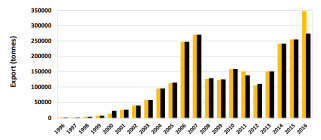
Recent updates
Pagination
- Page 1
- Next page
Measurement of progress against development indicators, and evaluation of policy, requires the production of data that allow the computation of comparable statistics and indicators over time. In order to compare the efficacy of policy and for targeted development intervention in the Pacific region, it’s not only important that data production and indicators are comparable over time, it’s also important that they’re comparable across space.
SPC, its development partners and the statistical agencies of the Pacific region have made significant progress in ex ante statistical collection standardisation initiatives. This includes standardisation of methods and instruments for specific statistical collections, but also standardisation across statistical collections. For example, most recent censuses and household income and expenditure surveys conducted in the Pacific region have adopted the same labour and education questionnaires and they’ve often collected and processed the data using the same statistical software. This presents opportunity for the calculation of comparable labour market and education indicators over time, across statistical collection and space.
Whilst significant progress has been made in ex ante statistical collection standardisation, the opportunity to prepare harmonised dataset ex post statistical collections has not been exploited. Harmonised datasets – datasets that are structurally the same, stored in the same format and utilise the same variable name, coding and classification conventions – present an opportunity for rapid analysis of Pacific development microdata to produce comparable indicators over time and across different statistical collections (i.e., time series of indicators that are comparable across census and surveys), and across space (i.e., comparison of development indicators across SPC members). Commonly structured and coded microdata facilitates efficient analysis as analysis processes undertaken for one dataset can be applied across all harmonised datasets; it will also allow SPC to be more efficient in response to data user requests for regionally comparable statistics and in providing data to various data dissemination platforms, such as PopGIS and dotstat.
To facilitate the production of ex post statistical collection microdata harmonisation, SPC had developed guidelines and a series of instruments to facilitate harmonisation of census and survey microdata. The guidelines focus on 15 Pacific Island countries and territories and 28 censuses and household income and expenditure survey datasets. The guidelines and instruments include:
- guidelines for the harmonisation of census and survey microdata;
- a database of topics that are common across census and household income and expenditure survey;
- a data dictionary, which includes a list of harmonised variables, their label and codes; and
- a translation for every harmonised variable and all 28 datasets that have been prioritised in the microdata harmonisation initiatives.
We would like to acknowledge Abimbola Sylvester Young and Jolly Mae Catalan, independent consultants, who drafted the guidelines and prepared the dictionary and translation tables. We would also like to acknowledge Mike Sharp, Scott Pontifex and Olivier Menaouer, Pacific Community, and Olivier Dupriez, World Bank, who contributed to the production of the guidelines and translation tables, and conceptualised the harmonisation initiative. Finally, we acknowledge the World Bank’s Trust Fund for Statistical Capacity Building which provided financial support to SPC for the development of the guidelines.
Among other planning, evaluation and indicator frameworks, the Sustainable Development Goals require the production and reporting of statistics that can be disaggregated by various sub-populations, such as sex, age, wealth quintile and disability status. The small size, and geographic spread, of Pacific populations pose significant challenges to achieving disaggregated and statistically significant reporting of progress against development indicators. The collection of data that can produce disaggregated indicators with a reasonable degree of accuracy, is expensive, particularly considering the geographic context of the Pacific region, and it places significant demand on statistical systems, including respondent burden resulting in ‘survey fatigue’.
In response to these challenges, the Statistics for Development Division (SDD) of the Pacific Community (SPC), in collaboration with partners, is developing has developed a series of sampling guidelines for the Pacific region. To date, the series of sampling guidelines include:
- Introduction to surveys and sampling;
- Overview of sampling theory;
- Sample design for household income and expenditure surveys (HIES), including case studies for survey practitioners and example in Excel;
- Sampling considerations for disability related surveys; and
- Sample design for agricultural surveys.
The draft guidelines are accessible herein.
The production of the series of sampling guidelines is a result of collaboration among multiple people representing multiple technical and development organisations. For the preparation of the introduction, overview of sampling theory and sample design for HIES, we acknowledge Bertrand Buffiere, Pacific Community, Bruce Fraser, Australian Bureau of Statistics, Kristen Himelein, World Bank, Chris Ryan, United Nations Economic and Social Commission for Asia and the Pacific, Tracey Savage, Statistics New Zealand, and Taggy Tangimetua, Government of the Cook Islands. For the preparation of the sampling considerations for disability related surveys, we acknowledge Daniel Mont, Centre for Inclusive Policy, and Scott Pontifex, Pacific Community. For the preparation of the sample design for agricultural survey, we acknowledge Dramane Bako, Food and Agriculture Organisation of the United Nations. We’d also like to acknowledge the Pacific Statistics Methods Board, particularly Vince Galvin and Ofa Ketu’u, Statistics New Zealand, and Mike Sharp, Pacific Community, for overseeing and coordinating the development of the guidelines. We also acknowledge the countless Pacific statisticians who provided feedback on the guidelines and ensured the content is suitable in the context of the Pacific region.
While all of the acknowledged technical and development partners made financial contributions, for which we are grateful for, we’d like to acknowledge the World Bank’s Trust Fund for Statistical Capacity Building which provided financial support to SPC for the development of the guidelines.
The next steps for parts 1, 2 and 3 of the guidelines is to consult representatives from Pacific statistical agencies who are attending a sampling workshop that is being held in Nadi, Fiji, from 24 February to 3 March, 2020, to ensure the guidelines are appropriate and relevant. The disability and agricultural chapters are in earlier stages of their development and they will be subject to further review and consultation. Endorsement from the Pacific Statistics Methods Board will be sought prior to publishing the guidelines.
Please check back here regularly for progress. All comments (below) are welcome.
Most National Statistics Offices websites have been using Joomla in the past, and many have expressed their wish to move to WordPress content management system. SDD, who provides support to the majority of NSOs across the Pacific, has addressed this request.
During the NSO Web Admin workshop in September 2019, SDD introduced the NSO network project, which is based on WP Multisites and the new NSO Theme for WordPress.
Learn more about the NSO network and how SPC members can join.
The Pacific Data Hub - Microdata Library is a gateway to the Pacific region’s survey, census, and administrative-based microdata and documentation. It is a central repository, online cataloguing and dissemination system of Pacific Island statistical microdata, metadata, reports and documents. It is a service established to facilitate access to microdata that provide information about people living in Pacific Island developing countries, their institutions, their environment, their communities and the operation of their economies. SPC provides safe access to microdata via its Pacific Data Hub-Microdata Library to enable research and analysis that benefits Pacific Island people.
Find out more about the Microdata Library here.
The Statistics for Development Division conducted a User Focus Survey in 2017 (here is a summary of the User Focus Survey, and an article with background information). As a result of this survey, and working closely with Statistics New Zealand and a consulting company called Maven in Wellington, we reviewed the SDD, PRISM and other associated websites in order to better meet the needs of users. All users will be glad to know that we are in the process of developing a new site which we hope to have available for testing by the middle of 2019. You can follow the progress of the development via this page.
One of the key differences users will notice is that we are moving away from a website which is structured as Demographers and Statisticians “think” to instead be structured as users think. That means it will revolve around themes and key words such as population, energy, trade, births and deaths rather than census, HIES, CRVS which don’t necessarily mean anything to users. We will also structure data by Country, so for example the Kiribati page will have the most recent reports for Census, HIES, DHS, a link to the Kiribati PopGIS, the Kiribati NSO website and anything else related to Kiribati. There will also be a powerful search engine which will easily enable users to search through all articles and databases.
Another key feature is that the new website will be dynamic – all documents will be stored in a document library, all statistical data in a database and all other datasets in the Pacific Data Hub. There will only ever be one copy of a document or dataset, and all changes only take place once, rather than in multiple locations. The site should be much cleaner, and easier to update than the current site.
Pagination
- Page 1
- Next page

